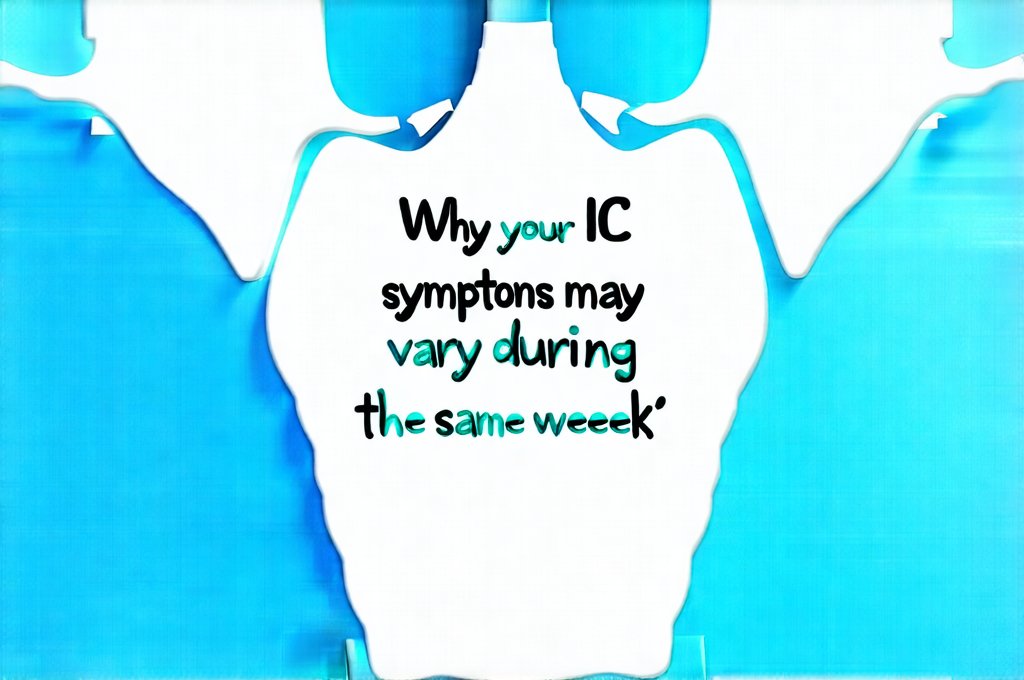Interstitial Cystitis (IC) – often referred to as painful bladder syndrome – is a chronic condition characterized by urinary frequency, urgency, and pelvic pain. But what many individuals living with IC experience isn’t a consistent level of discomfort. Instead, symptoms can fluctuate dramatically, even within the same week or even the same day. This unpredictability can be incredibly frustrating and debilitating, leading to anxiety and difficulty planning daily life. Understanding why these fluctuations occur is crucial for coping with the condition and navigating treatment options effectively. It’s important to remember that IC is a complex puzzle, and symptom variability is a common feature of the illness – not a sign that you’re imagining things or doing something wrong.
The challenge lies in pinpointing the exact reasons behind these variations. Unlike many other medical conditions with clear-cut causes, IC presents differently for each individual. Several factors can contribute to the ebb and flow of symptoms, ranging from dietary choices and stress levels to hormonal shifts and neurological influences. It’s rarely a single cause; more often, it’s an interplay between multiple elements that determines how someone experiences IC at any given moment. This article will delve into some of these key contributing factors, providing insights into why your IC symptoms might vary throughout the week and offering strategies for better managing this unpredictable aspect of the condition.
Understanding Symptom Variability in IC
The fluctuating nature of IC symptoms stems from the multifaceted pathophysiology believed to underlie the disease. Current research suggests that IC isn’t solely a bladder problem; it involves complex interactions between the bladder lining, immune system, nervous system, and even psychological factors. The bladder lining may have microscopic defects allowing substances normally kept within the cells to irritate nerve endings. This leads to inflammation and pain signals sent to the brain. But this process isn’t static. It’s influenced by a constant stream of internal and external stimuli that can amplify or dampen the perceived discomfort.
These fluctuations aren’t just about the intensity of pain; they can affect the specific symptoms you experience too. One day, you might primarily struggle with frequency and urgency, while another day pelvic pain is dominant. This shifting symptom presentation makes it difficult to track patterns and communicate effectively with healthcare providers. Furthermore, individual sensitivity to triggers varies greatly. What causes a flare for one person may have little to no effect on another. Identifying your personal triggers – which we’ll discuss further below – is essential for managing IC symptoms proactively. Many women find their symptoms are affected by cycles, so understanding can cystitis symptoms vary can be helpful.
Finally, the neurological component plays a significant role. Chronic pain can alter the way the brain processes signals, leading to central sensitization. This means that even minor stimuli can be interpreted as intensely painful, and the nervous system becomes hypersensitive, contributing to symptom variability. It’s not simply about what’s happening in the bladder; it’s also about how your brain is interpreting those signals.
Common Contributing Factors to Symptom Fluctuations
Many everyday factors can influence IC symptoms and contribute to their unpredictable nature. Dietary choices are often a major player, with acidic foods and beverages (citrus fruits, tomatoes, coffee, soda) frequently cited as triggers. However, individual sensitivities vary widely, so identifying your specific dietary culprits is essential through careful elimination diets or food diaries. Stress and emotional state also have a profound impact. Chronic stress can exacerbate inflammation and heighten nervous system sensitivity, leading to increased pain and urgency.
Hormonal fluctuations – particularly in women – can significantly affect IC symptoms. Many individuals report symptom flares around their menstrual cycle, during pregnancy, or menopause due to changes in estrogen levels. Physical activity, while generally beneficial for overall health, can sometimes aggravate IC symptoms. Overexertion or certain types of exercise (like high-impact activities) might put pressure on the bladder and surrounding muscles, leading to increased pain. Finally, weather changes – particularly cold temperatures – have been reported as triggers by some individuals with IC, though the exact mechanism isn’t fully understood. Sometimes a sudden drop in flow can be concerning – learn why your flow might drop to ease concerns.
Identifying Your Personal Triggers
Pinpointing your personal triggers is a cornerstone of IC management. This requires dedicated self-monitoring and observation. Here are some steps to help you identify what contributes to your symptom fluctuations:
- Keep a detailed symptom diary: Record everything that might potentially influence your symptoms, including food and drink intake, stress levels, physical activity, weather conditions, menstrual cycle phase (if applicable), sleep quality, and any other relevant factors.
- Look for patterns: After several weeks of consistent tracking, review your diary to identify potential correlations between specific triggers and symptom flares. Are you more likely to experience symptoms after consuming certain foods? Does stress consistently precede a flare-up?
- Elimination diet: Consider a carefully planned elimination diet under the guidance of a healthcare professional to systematically remove suspected trigger foods and observe how your symptoms respond. Reintroduce foods one at a time to identify specific sensitivities.
The Role of Stress & Emotional Wellbeing
The connection between stress and IC symptoms is well-documented. Chronic stress triggers the release of cortisol, a hormone that can exacerbate inflammation and heighten nervous system sensitivity. This creates a vicious cycle: stress worsens symptoms, which leads to more stress, further amplifying the pain and discomfort. Managing stress effectively is therefore crucial for reducing symptom fluctuations.
- Mindfulness & Meditation: Practicing mindfulness or meditation techniques can help calm the nervous system and reduce cortisol levels.
- Relaxation Techniques: Deep breathing exercises, progressive muscle relaxation, and yoga are all effective ways to manage stress and promote relaxation.
- Therapy: Cognitive Behavioral Therapy (CBT) can provide tools for coping with chronic pain and managing emotional responses to IC symptoms.
Neurological Sensitization & Central Pain Amplification
Central sensitization refers to a state where the nervous system becomes hypersensitive, leading to amplified pain signals even in response to minor stimuli. This is common in chronic pain conditions like IC. Over time, the brain learns to associate certain sensations with pain, making it more likely to perceive discomfort even when there’s no actual tissue damage.
Understanding central sensitization can help you reframe your relationship with pain. Instead of viewing every symptom as a sign of bladder inflammation, recognize that some of the perceived discomfort might be due to neurological amplification. This doesn’t diminish the validity of your experience; it simply highlights the importance of addressing both the physical and neurological aspects of IC. Therapies like graded motor imagery or mirror therapy may help retrain the nervous system and reduce central sensitization over time – discuss these options with your healthcare provider. If you are starting bladder medication, it’s important to understand what to expect during the first week.
It’s essential to remember that managing IC is a journey, not a destination. Symptom fluctuations are normal, but understanding the factors that contribute to them empowers you to take control of your condition and live a fuller, more comfortable life.





















